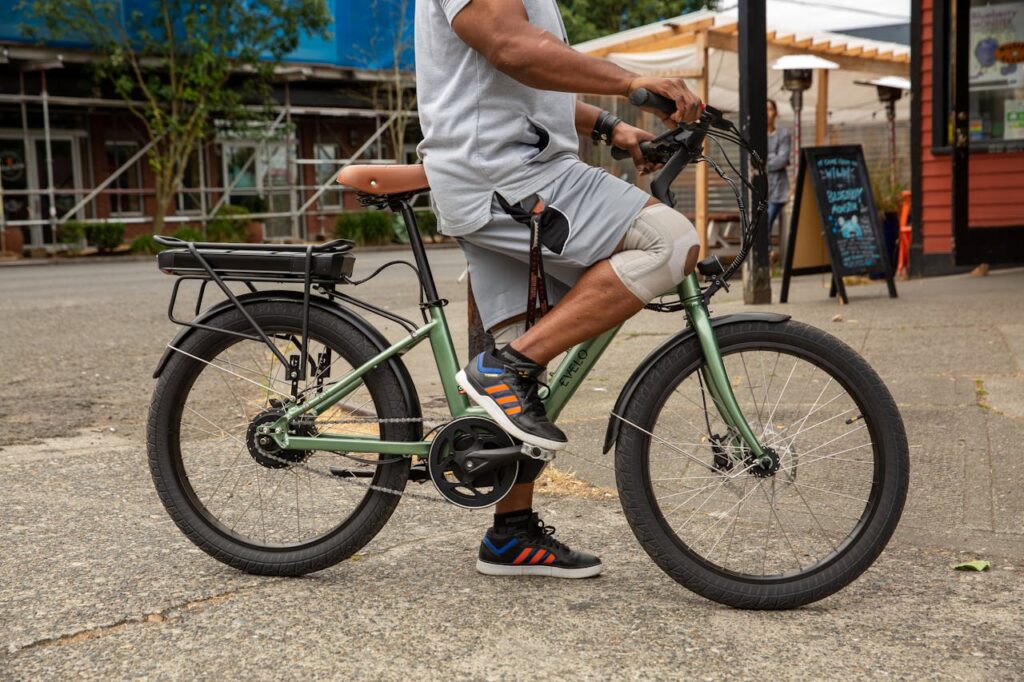Electric bikes, or e-bikes, have revolutionized how we think about transportation. This ultimate guide will walk you through everything you need to know about choosing the best model that fits your lifestyle and needs. We will discuss various types of electric bikes, their benefits, features to consider, and maintenance tips. Whether you’re looking for a commuter bike, a mountain bike, or a leisure ride, understanding these aspects will help you make an informed decision. Let’s dive in!
In recent years, electric bikes have gained immense popularity due to their convenience, eco-friendliness, and ability to make cycling more accessible for everyone. With numerous models and specifications available, selecting the right e-bike can be overwhelming. This guide aims to simplify the process by providing essential information to help you choose the perfect electric bike tailored to your requirements.
What are the benefits of riding an electric bike?
Electric bikes offer numerous benefits, including reduced commuting time, lower carbon emissions, and enhanced physical fitness. Additionally, they provide an enjoyable riding experience, making cycling more accessible to a wider audience.
How long do electric bike batteries last?
The lifespan of an electric bike battery typically ranges from 2 to 5 years, but it largely depends on usage, charging habits, and maintenance. High-quality batteries may last even longer, while poor upkeep can shorten their lifespan.
Are electric bikes legal to ride on sidewalks?
Laws regarding riding electric bikes on sidewalks vary by location. It’s crucial to check with local regulations to ensure compliance. In many areas, e-bikes are treated similarly to traditional bicycles, allowing them to be ridden on bike paths and certain trails.
Types of Electric Bikes
Commuter E-bikes
Commuter e-bikes are designed specifically for urban environments, making them ideal for daily travel to work or school.
- Lightweight Design: Built for efficiency and speed, commuter e-bikes are typically lighter than other types, allowing for easy maneuverability.
- Integrated Lights: Many come equipped with built-in lights for safety during nighttime rides.
- Fenders and Racks: Often include fenders to protect against splashes and integrated racks for carrying loads.
- Comfortable Seating: Designed with a focus on comfort to accommodate longer rides in traffic.
- Battery Range: Commuter e-bikes usually come with batteries that provide enough range for a full day of riding.
Mountain E-bikes
Mountain e-bikes cater to off-road enthusiasts, combining power with durability to tackle rugged terrains.
- Robust Construction: Built with durable frames and components to withstand rough conditions.
- Powerful Motors: Equipped with higher wattage motors for climbing steep hills and navigating challenging trails.
- Suspension Systems: Feature advanced suspension for absorbing shocks on rocky paths and uneven surfaces.
- Tires for Traction: Wider and knobbier tires provide better grip and control on loose ground.
- Enhanced Stopping Power: Fitted with hydraulic disc brakes for greater stopping efficiency in demanding conditions.
Folding E-bikes
Folding e-bikes offer portability and convenience, making them perfect for city dwellers or those with limited storage space.
- Compact Size: Can be easily folded, allowing for convenient storage in small apartments or car trunks.
- Lightweight Materials: Constructed from lightweight materials for easier carrying.
- Versatility: Ideal for combining with public transportation, such as trains and buses.
- Quick Release Mechanisms: Usually feature user-friendly mechanisms for quick folding and unfolding.
- Adjustable Components: Most models have adjustable seats and handlebars to fit various rider heights.
Cargo E-bikes
Cargo e-bikes are tailored for transporting goods or multiple passengers, blending utility with functionality.
- Heavy-Duty Frames: Designed to carry significant loads without compromising stability.
- Large Cargo Areas: Equipped with baskets or platforms to hold groceries, packages, or children.
- Powerful Batteries: Typically have larger batteries to support additional weight and longer distances.
- Sturdy Wheels: Fitted with robust wheels to handle increased stress while still providing a smooth ride.
- Safety Features: May include extra reflectors and lights for visibility when carrying heavy loads.
Cruiser E-bikes
Cruiser e-bikes prioritize comfort and style, making them excellent for leisurely rides along coastal paths or city streets.
- Relaxed Geometry: Designed with a comfortable, upright seating position to reduce strain on the rider’s back.
- Stylish Designs: Often available in eye-catching colors and designs for aesthetic appeal.
- Wide Tires: Provide stability and comfort on various terrains.
- Low Step-Through Frames: Easy to mount and dismount, making them suitable for riders of all ages.
- Affordability: Generally more budget-friendly compared to specialized e-bikes, appealing to casual riders.
Features to Consider When Buying an E-Bike
Battery Capacity
Understanding battery capacity is crucial, as it directly affects the distance you can travel on a single charge.
- Measured in Ah: Battery capacity is measured in amp-hours (Ah); higher values indicate longer ranges.
- Charging Time: Check how long it takes to charge fully; faster charging may be more convenient.
- Warranty Period: Look for warranties that cover battery performance to mitigate risks.
- Removability: Removable batteries offer flexibility for charging off the bike, especially for commuters.
Motor Power
The power of the motor influences the bike’s performance, particularly during inclines.
- Measured in Watts: E-bikes generally range from 250W to 750W; choose according to your riding needs.
- Types of Motors: Options include hub motors (front or rear) and mid-drive motors, each offering unique benefits.
- Pedal Assist vs. Throttle: Determine if you prefer pedal assistance that engages only when pedaling or a throttle for instant power.
Frame Material
The material of the frame impacts the bike’s weight, durability, and ride quality.
- Aluminum Frames: Lightweight and corrosion-resistant, popular for various e-bike types.
- Steel Frames: Heavier but often sturdier, suitable for cargo e-bikes.
- Carbon Fiber Frames: Offer high strength-to-weight ratios, although typically more expensive.
Gearing System
A good gearing system enhances your riding experience by providing smoother transitions between speeds.
- Single-Speed vs. Multi-Speed: Single-speed bikes are simpler while multi-speed setups offer versatility for varying terrains.
- Internal Gear Hubs: These require less maintenance and allow for shifting while stationary.
- Derailleur Systems: Common in performance-oriented bikes, providing a wider range of gear choices.
Price Range
Budget considerations play a significant role in selecting the right e-bike.
- Entry-Level Models: Priced around $500 to $1,000, suitable for occasional riders.
- Mid-Range Models: Between $1,000 to $3,000, offering better performance and features.
- High-End Models: Over $3,000, designed for serious enthusiasts or specific purposes like mountain biking.
Choosing the best electric bike requires careful consideration of various factors, including the type of ride you plan, your budget, and essential features like battery capacity and motor power. By understanding the different types of e-bikes and their unique characteristics, you can make an informed decision that aligns with your lifestyle and preferences. Remember, investing in an e-bike not only enhances your personal mobility but also contributes positively to the environment.










